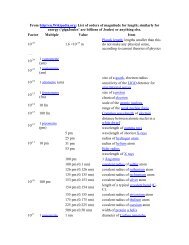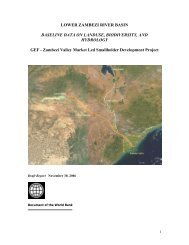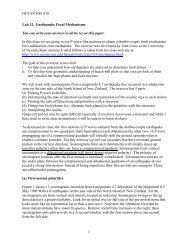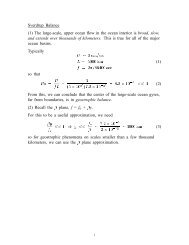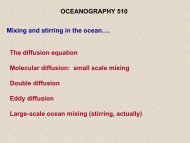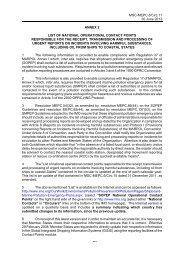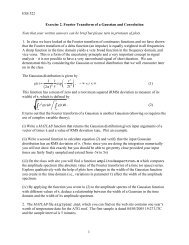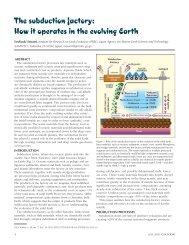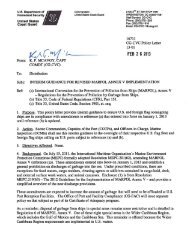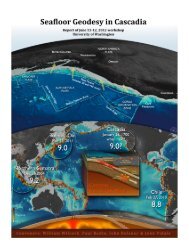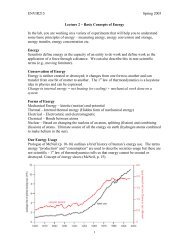16. Sediment Transport Across the Continental Shelf and Lead-210 ...
16. Sediment Transport Across the Continental Shelf and Lead-210 ...
16. Sediment Transport Across the Continental Shelf and Lead-210 ...
Create successful ePaper yourself
Turn your PDF publications into a flip-book with our unique Google optimized e-Paper software.
Shallow water waves<br />
Wave particle orbits flatten out in shallow water<br />
Wave generated bottom motions<br />
• strongest during major storms (big waves)<br />
• extend deepest when <strong>the</strong> coast experiences long wavelength swell from<br />
local or distant storms<br />
<strong>Sediment</strong> Mobilization 2. Bottom Currents<br />
• The wind driven ocean<br />
circulation often leads to<br />
strong ocean currents<br />
parallel to <strong>the</strong> coast.<br />
• These interact with <strong>the</strong><br />
seafloor along <strong>the</strong><br />
continental shelf <strong>and</strong><br />
upper slope.<br />
• The currents on <strong>the</strong><br />
continental shelf are<br />
often strongest near<br />
outer margins<br />
Aguihas current off east coast of sou<strong>the</strong>rn Africa. The<br />
current flows south <strong>and</strong> <strong>the</strong> contours are in units of cm/s<br />
<strong>Sediment</strong> Distribution on <strong>the</strong><br />
<strong>Continental</strong> shelf<br />
Coarse grained s<strong>and</strong>s - require strong<br />
currents to mobilize, often confined to<br />
shallow water where wave bottom<br />
interactions are strongest (beaches)<br />
Fine grained muds - require weaker<br />
currents to mobilize, transported to<br />
deeper water.<br />
Upcoming lab<br />
In <strong>the</strong> lab following this lecture you are<br />
going to calculate a sedimentation rate for<br />
muds on <strong>the</strong> continental shelf using<br />
radioactive isotope <strong>Lead</strong>-<strong>210</strong> <strong>and</strong> you are<br />
going to interpret a data set collected off<br />
<strong>the</strong> coast of Washington.<br />
3



